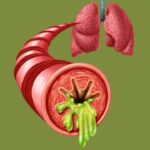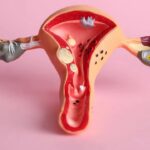Gallbladder stones are among the most common digestive disorders, affecting individuals of all ages particularly women, middle-aged adults, and those with unhealthy lifestyles. In many cases, gallbladder stones do not produce noticeable symptoms in their early stages. However, if left undetected or untreated, they can lead to serious complications such as cholecystitis, cholangitis, acute pancreatitis, or even sepsis. This article provides essential insights into the condition, including its causes, symptoms, treatment options, and effective preventive strategies.
1. What Are Gallbladder Stones and How Do They Form?
1.1 Definition of Gallbladder Stones
Gallbladder stones, also known as cholelithiasis, form when components of bile such as cholesterol, bile salts, and bilirubin crystallize and accumulate into solid masses within the gallbladder. The gallbladder is a small organ located beneath the liver that stores and concentrates bile, which helps digest fats. When its function is impaired or bile composition becomes imbalanced, crystals can settle and gradually form stones.
These stones may vary in size from a few millimeters to several centimeters and may be single or multiple. Despite their small size, gallbladder stones can obstruct bile flow, irritate the gallbladder lining, and trigger inflammation or tissue damage if not promptly managed.
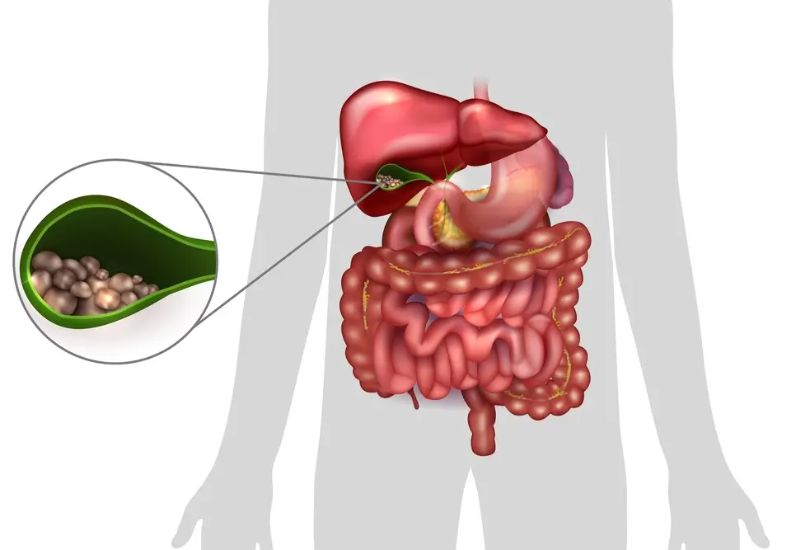
Gallbladder stones form when bile components like cholesterol, bile salts, and bilirubin crystallize into solid masses.
1.2 Factors Contributing to Stone Formation
Three primary factors contribute to gallbladder stones formation: excessive cholesterol in bile, reduced gallbladder motility, and the presence of crystallization triggers. When cholesterol concentration exceeds bile salts’ solubility limit, crystals begin to form and grow into stones.
Inadequate gallbladder contraction, especially after meals, causes bile stasis, which further supports stone development. Additionally, infections, inflammation of the biliary tract, or abnormal components in bile can act as catalysts, accelerating the crystallization process.
2. Causes, Symptoms, and Potential Complications
2.1 Why Do Gallbladder Stones Form?
Several risk factors contribute to gallbladder stones. A high-fat, low-fiber diet and poor hydration are among the most common dietary causes. Other contributing factors include prolonged fasting, rapid weight loss, obesity, and lipid metabolism disorders, all of which increase cholesterol levels in bile.
Women who are pregnant or on long-term oral contraceptives face higher risks due to hormonal changes that raise cholesterol levels. Individuals with diabetes, chronic liver disease, hemolytic anemia, or biliary parasites are also at increased risk.
Age is another significant factor, with risk rising notably after age 40. Family history and genetic predisposition further increase the likelihood of developing gallstones.
2.2 Recognizing Symptoms and Common Complications
Most individuals with gallbladder stones remain asymptomatic for years. Symptoms usually occur when stones obstruct bile ducts. Classic signs include sharp pain in the upper right abdomen, especially after fatty meals. The pain may radiate to the back or right shoulder and last from minutes to hours. Other symptoms may include nausea, bloating, belching, and indigestion.
Acute cholecystitis may cause high fever, chills, and severe abdominal pain. If stones block the common bile duct, symptoms like jaundice, dark urine, and pale stools may occur. Blockage of the pancreatic duct can lead to acute pancreatitis, a life-threatening condition.
Serious complications may include biliary tract infections, peritonitis, gallbladder rupture, or septic shock if infection spreads.
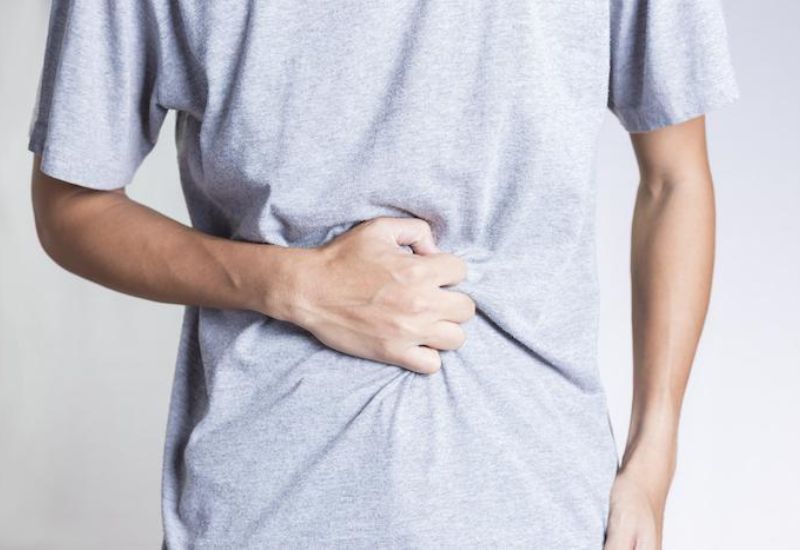
Gallbladder stone patients may experience sharp pain in the right upper abdomen.
3. Treatment and Prevention of Gallbladder Stones
3.1 Treatment Approaches
Treatment for gallbladder stones depends on their size, location, the patient’s health status, and symptom severity. In asymptomatic cases, especially with small stones found incidentally, doctors may recommend regular monitoring and lifestyle modifications.
For symptomatic or complicated cases, laparoscopic cholecystectomy (gallbladder removal) is the most common and effective solution. This minimally invasive procedure offers faster recovery and lower complication risks. Although the gallbladder is removed, the liver continues to produce bile, ensuring that digestion is not severely impacted.
In rare cases where surgery is not advisable due to health conditions, oral bile acid medications may be used to dissolve the stones. However, this approach has limited success and works slowly.
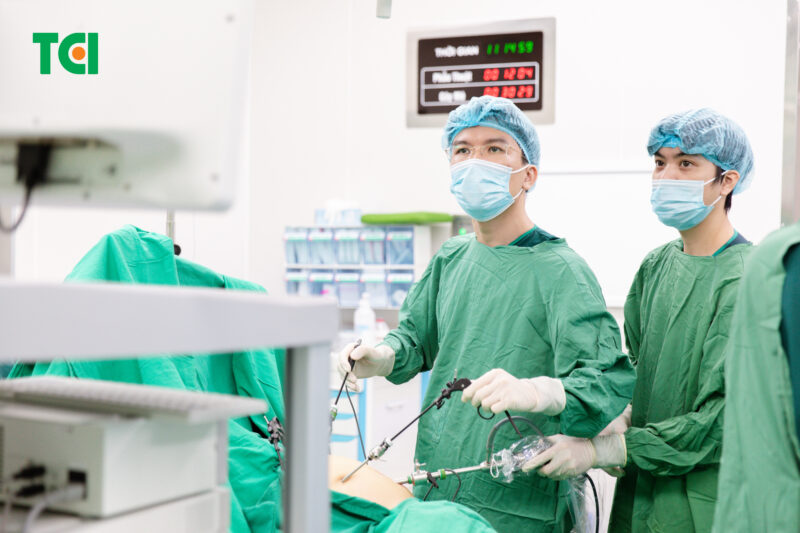
Laparoscopic surgery is used to remove gallbladder stones.
3.2 Diet and Lifestyle to Prevent Recurrence
Preventing cholelithiasis requires a comprehensive approach that includes healthy eating, regular exercise, and managing metabolic risk factors. A diet rich in vegetables, fruits, whole grains, and lean proteins while low in saturated fats is essential. Adequate water intake helps dilute bile and reduces crystal formation risk.
People with a history of gallstones or gallbladder removal should avoid fried foods, organ meats, soft-boiled eggs, carbonated beverages, and alcohol. Rapid weight loss and prolonged fasting should also be avoided to prevent bile stasis.
Maintaining a healthy weight, exercising regularly, and managing blood sugar and lipid levels are key preventive measures. For those who have undergone treatment, routine follow-ups with a healthcare provider are vital to detect early signs of recurrence.
Gallbladder stones are a common but manageable condition. With early detection and appropriate treatment, patients can avoid serious complications. Understanding the causes, symptoms, and treatment options empowers individuals to take control of their health and make informed lifestyle choices. Adopting preventive habits today lays a strong foundation for a healthier digestive system in the future.






